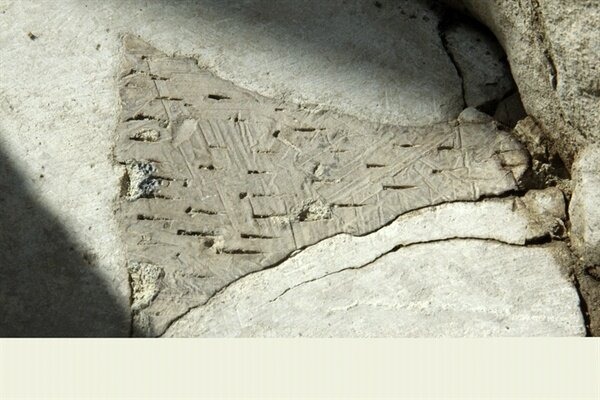Rare dovetail-joints found in UNESCO-tagged Pasargadae

TEHRAN – Personnel of Pasargadae have recently found two rare dovetail-joints, which used to attach massive stone slabs, pillars and columns in the UNESCO World Heritage site that was once the capital of the Achaemenid Empire under Cyrus the Great (559–530 BC), who ordered its construction.
The dovetail joint technique probably pre-dates written history. Some of the earliest known examples of the dovetail joint are in ancient Egyptian furniture entombed with mummies dating from First Dynasty, as well as the tombs of Chinese emperors. The dovetail design is an important method of distinguishing various periods of furniture.
Over the past couple of centuries, some people pulled the dovetail-joints out of their place in order to use its lead for making slugs for shotguns as the abuse have caused a lot of damage to the stone blocks and the architecture of the buildings, ILNA quoted Afshin Ebrahimi, director of the World Heritage site, as saying on Friday.
It’s the first time that such well flawless dovetail-joints are found in Pasargadae, perhaps they have remained hidden from the eyes of the abductors, the official said.
The discovery was made during a preservation project already began to unite the scattered pieces with the aim of helping to read out the architecture of the complex.
Situated in about 50 km north of Persepolis, Pasargadae embraces outstanding examples of the first phase of royal Achaemenid art and architecture and exceptional testimonies of Persian civilization.
Cyrus was the founder of Achaemenid Empire which at its greatest extent stretched from the Balkans to the Indus Valley, spanning 5.5 million square kilometers. The Persian king declared world’s first charter of human rights, also known as the Cyrus Cylinder.
Despite the minimal nature of the ruins they make a good introduction to the wonders of Persepolis, some 60km to the south. Best visited en route from Yazd or Isfahan to Shiraz, most people fit them into an extended tour from Persepolis with stops at Naqsh-e Rostam and Naqsh-e Rajab.
AFM/MG
